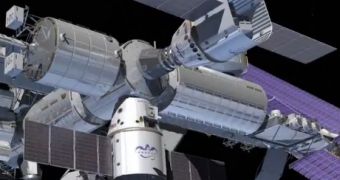Officials with the American space agency announced yesterday, April 16, that the planned launch of the private Dragon spacecraft is likely to proceed according to the current schedule. The success of this flight will mark the first time a space vehicle built by a private entity achieves orbital docking.
The Dragon cargo capsule is being developed by Hawthorne, California-based Space Exploration Technologies Inc. (SpaceX), under a $1.6 billion COTS contract with NASA. The agreement calls for the company to carry out 12 resupply flights to the International Space Station over the next few years.
Dragon already flew to space once, in December 2010, when it managed to complete four orbits around the planet, before landing safely in the Pacific Ocean. During the flight scheduled to begin on April 30, SpaceX engineers will try to get it to dock to the ISS.
SpaceX will use its facilities in Florida for this mission. It currently operated the Space Launch Complex-40 (SLC-40) pad at the Cape Canaveral Air Force Station (CCAFS), right next door to the NASA Kennedy Space Center (KSC).
One of the most interesting aspects of this spacecraft is that it has no robotic docking system, like the Russian-built Soyuz and Progress cargo capsules do. Instead, SpaceX opted for a system similar to the one used by the Japan Aerospace Exploration Agency (JAXA) on its HTV spacecraft.
This approach to docking involves flying the Dragon on a course that will take it very close to the ISS. Meanwhile, astronauts inside the orbital lab take positions at the controls of the Canadarm-2 robotic arm, and get ready to grapple the capsule as it zips past.
There is only a brief window of opportunity for capturing the spacecraft, otherwise its speed will take it out of range in less than 2 minutes or so, Space reports. Astronauts on the ISS have enough experience with this type of maneuver, so the success of the mission rests with the Dragon capsule.
At this point, the spacecraft is undergoing software validation tests, among other assessments.
“Everything looks good as we head towards the April 30 launch date, but I would caution us all that there's still quite a bit of work that needs to be done. We'll continue to work through this stuff over the next week or so,” Bill Gerstenmaier told the media on April 16.
“On the 23rd of April, we'll get back together again and just kind of assess where we are overall to see how things are moving forward,” added the official, who is the NASA associate administrator for Human Exploration and Operations.

 14 DAY TRIAL //
14 DAY TRIAL //